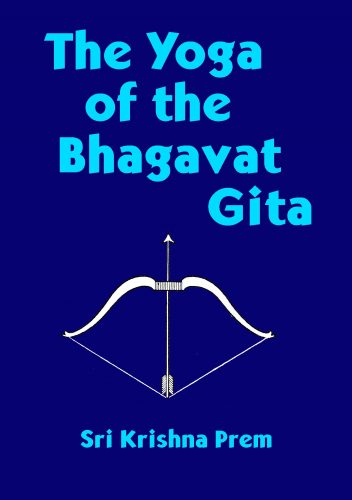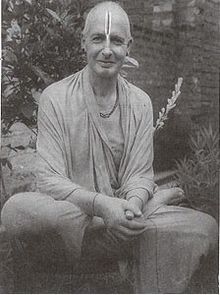The Yoga of the Bhagavat Gita by Sri Krishna Prem

The Yoga of the Bhagavat Gita
This book is a complete commentary on the Bhagavat Gita written by Sri Krishna Prem in 1937. Originally published as a series of articles in The Aryan Path, this material was revised and published in book form in 1938 and subsequently revised again in 1948. This is a masterful presentation of the Gita, clearly written by one who knows whereof he speaks. The author has also managed to demonstrate the parallels and commonalities this material has with Buddhism without overwhelming the primary strains of the Gita with extraneous material. This book also contains a glossary of Sanskrit terms used within and several appendices which help provide a broader understanding of the Gita and its context.
Book Details
Author: Sri Krishna Prem
Print Length:
Publisher: Penguin Books Inc.
Submitted by: Blindshiva
Book format: Pdf, ePub, mobi (Kindle)
Language: English
Book Download
Contents
- Preface
- Introduction
- Editor’s Note
- Prolegomena
- The General Setting
- Chapter I. The Yoga Of The Dejection Of Arjuna
- Chapter II. The Yoga Of The Discriminative Wisdom
- Chapter III. The Yoga Of Action
- Chapter IV. The Yoga Of The Partial Knowledge
- Chapter V. The Yoga Of Renunciation
- Chapter VI. The Yoga Of Meditation
- Chapter VII. The Yoga Of Knowledge
- Chapter VIII. The Yoga Of The Imperishable Eternal
- Chapter IX. The Yoga Of The Royal Science And Royal Secret
- Chapter X. The Yoga Of The Pervading Powers
- Chapter XI. The Yoga Of The Vision Of The Cosmic Form
- Chapter XII. The Yoga Of Devotion
- Chapter XIII. The Yoga Of Distinction Between
The Field And The Knower Of The Field - Chapter XIV. The Yoga Of The Division Of The Three Guṇas
- Chapter XV. The Yoga Of The Highest Spirit
- Chapter XVI. The Yoga Of The Division Between
The Bright And Dark Powers - Chapter XVII. The Yoga Of The Threefold Faith
- Chapter XVIII. The Yoga Of The Renunciation Of Liberation
- Appendix A. Note On The Terms Consciousness And Form
- Appendix B. Note On The Words Soul And Matter
- Appendix C. Note On The Four States Of Consciousness
- Appendix D. Note On Avatāras
- Appendix E. Diagram Of The Cosmic Levels
- Appendix F. Note On The Process Of Cosmic Manifestation
- Appendix G. Note On The After-Death Paths
- Appendix H. Note On The Five Elements
- Glossary
- Note On Transliteration And
- Pronunciation Of Sanskrit Terms
Sample
The Yoga of the Bhagavat Gita
The teachings of the Gita are spoken by Krishna, who is acting as the charioteer of Arjuna; they are overheard by Sañjaya as the result of the blessing of Vyasa, the author of the Scriptures, and who signifies the power of inspiration, and they are repeated to Dhṛitarāshṭra. This is the framework in which the teachings of the Gita are set. Who are these persons, and what is the significance of the two charioteers?
Krishna, we have seen, is the Divine Soul who imparts the life-giving Wisdom to the individual soul. The symbol of the charioteer is one that occurs in the Upanishads and also in the Dialogues of Plato. In the Upanishads the individual soul is described as the Rider in the chariot of the body, while “buddhi,” a spiritual faculty that we shall have to discuss later, is the charioteer. In the Gita, however, the use to which the symbol is put is slightly different. True, the individual soul in the form of Arjuna is still the rider in the chariot, but the charioteer is, as we have seen, the Divine Self in the person of Krishna.
The difference between the Gita and the Upanishad on this point is more apparent than real. In the first place, Krishna as charioteer stands for the manifested Átman, the great self (Mahat Átman), of which the buddhi is the purely cognitive aspect. In fact, though in earlier texts, such as the Kaṭhopanishad, the two are distinct, later writers fused them into one. When it is further noted that the buddhi is symbolised by the bright yellow robes in which Krishna is always depicted, it will be seen that the difference between the two views is very small indeed.
Sri Krishna Prem Ronald Henry Nixon was born in 1898. After service in the Royal Flying Corps, he took his M.A. at Cambridge and in 1920 went to India to pursue his interest in Buddhism and theosophy. There he met his guru, Sri Yashoda Mai, a Bengali lady of profound mystical experience. He followed her to a remote ashram in the Himalayan foothills, took holy orders as a monk of the Hindu Vaishnava sect, and was given the name Sri Krishna Prem. After his guru’s death, he was left in charge of the ashram and reluctantly accepted the task of leading the other disciples. Teaching from his own religious insight and retaining only such ritual as he felt to be of universal significance, he became one of the outstanding figures in India’s spiritual life. He died in 1965.About Author: Sri Krishna Prem


Leave a Reply
Want to join the discussion?Feel free to contribute!